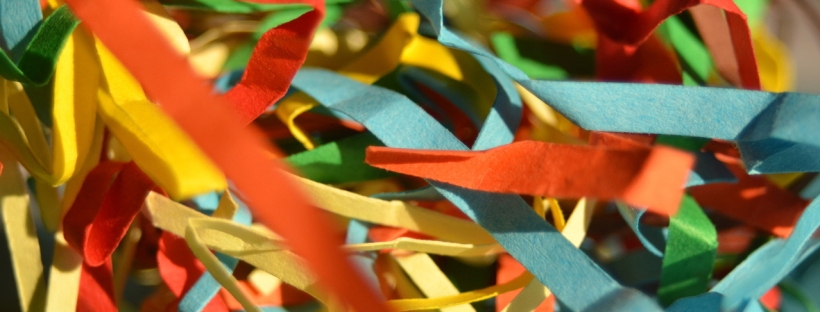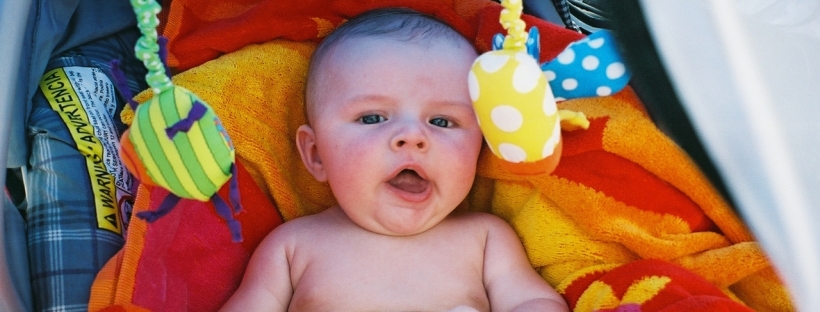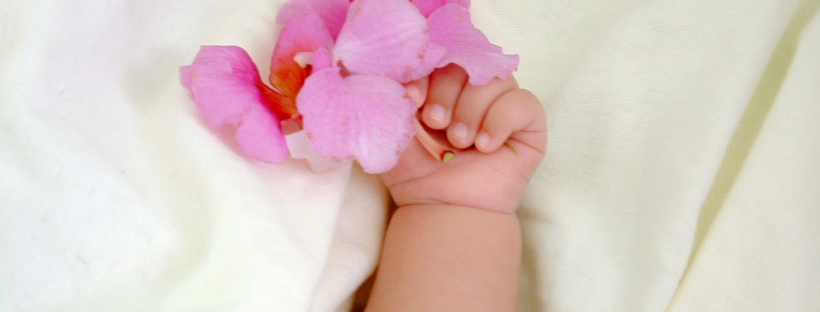Put paper into a shredder if you have one. Otherwise, cut paper into long thin pieces. You can use a variety of paper. For instance, construction paper, printer paper, magazine sheets, scrap paper, or newspaper. Then put it all in a tub where he can play away. He will be transfixed with pulling the paper apart and feeling how it crumples together.
Category: Fine Motor Activities
See, Reach, Touch Infant Activity
Your baby has been rigorously practicing reaching and grabbing, and with all the swatting at toys, they have finally been able to successfully reach and grab (on average starts around 4-5months)and maybe even do this consistently and in a very controlled fashion(starts around 6-7months). Continue to let them hone their skills through fun practice of reaching for what they want. This also stimulates their sense of vision and touch!
Offer a variety of objects that differ in size, shape, and texture. Let her feel what it is like to hold a smooth ball versus an object with corners; a small toy that she can easily hold in one hand or a larger toy requiring to use two hands; a toy that has different parts that dangle versus a solid object, to name just a few examples. Be careful not to overwhelm her with too many toy options. Pick 3-5 toys on which she can focus. Who knows, she may even reach for 2 toys for each hand!
3-9M
Pincer Grasp Baby Activities
Depending on your baby, can maybe try these activities as young as 6 months. Usually around 9 months, however, is when the pincer grasp may first be developing.
Baby is a pro at reaching and grabbing what they want! The next fine motor milestone programmed in their DNA, is the pincer grasp- grabbing with the thumb and finger. Before they may have successfully grabbed small objects by scooping and tightly grabbing with their palm. But now, they will realize and practice the finer movement of grabbing with their fingers. You can help them along with this motor skill development by fun play activities to introduce and refine the pincer grasp.
Your baby loves to squeeze, push and pull things apart. Luckily, this helps her strengthen those little muscles of her hand.
- Let her squirt and squeeze those bath toys
- Squeeze squishy balls
- Play with Mega Blocks
- Embed toys in playdoh and have her pull them out
The act of pointing or poking is a great first step. It helps isolate that pointer finger.
- Play with your baby and ask her to point at birds or planes she sees; point at pictures in books; or point at cheerios on her plate. Take at least 5 minutes to do this
- Push holes in play dough, the rug or carpet or squish food. Take at least 10 minutes to do this
- Poke at toys with buttons, holes, or switches. Take at least 5-10 minutes to do this
Batting Hand to Grabbing Hands Motor Baby Activity
Your baby is still learning to successfully grab onto what they want. They may not be able to yet, but they’re working on this skill by batting at toys repetitively. Help them develop their hand-eye coordination as well as their grabbing and holding skills through fun enticing toys!
She will notice what she wants, and it seems like nothing will stop her from trying to reach and grab ahold of it. Encourage her to reach for objects by safely placing a stick across her crib with 2-3 different objects safely tied to the stick. Choose toys you think she will want to play with. Make sure the objects are within her sight, reach, and touch. Throughout her play, talk to her. Describe what she is doing, describe what the toy she is trying to grab looks or feels like, or give her encouraging words. Make sure you are watching the safety of your child and do not leave any cords or strings alone with her in the crib.
1- 5 Months
Holding- A New Idea!
Right now your baby’s hands are most likely tightly clenched in little fists. When you apply pressure or stimulation to their palms, their hands automatically close tightly. This is called reflexive grasping- they are not doing it voluntarily. In no time, they will be opening and closing their little hands whenever they want and examining whatever object they have chosen to hold on to. In the meantime, help your baby feel different objects in their hand and get the sensation of holding.
Find a little toy that he will be able to hold on to and that you know interests him. Show him the toy and engage his interest by describing the toy or what you are about to do. For example: “Look at this rattle! It is very shiny and makes noise (shake, shake, shake). Would you like to hold it? Looks like you do! Mommy help.” Then touch the toy on the inside of his palm so that his fingers reflexively close around it. If he drops it, hand it back to him and speak loving words when you do.
0-3M




